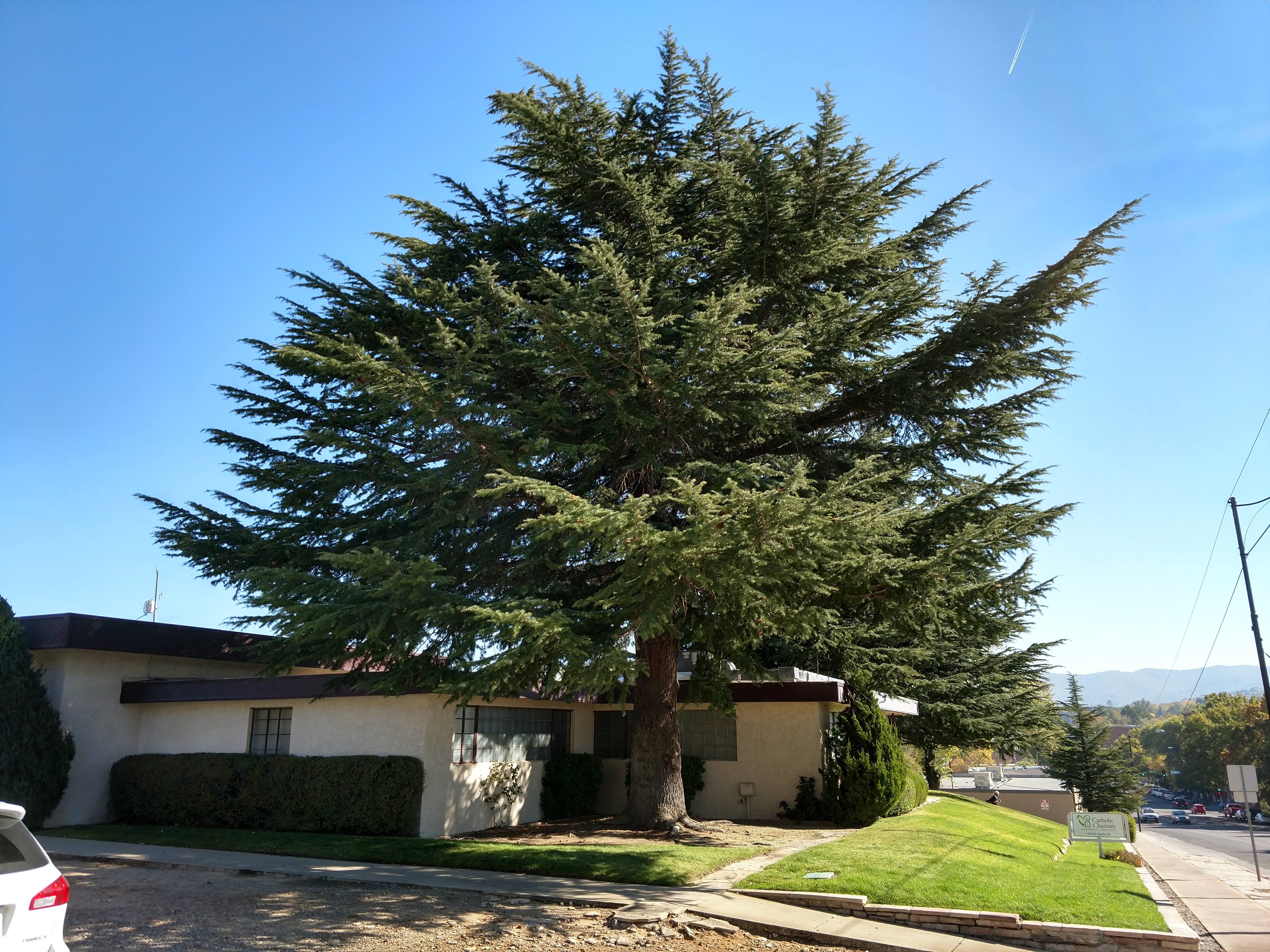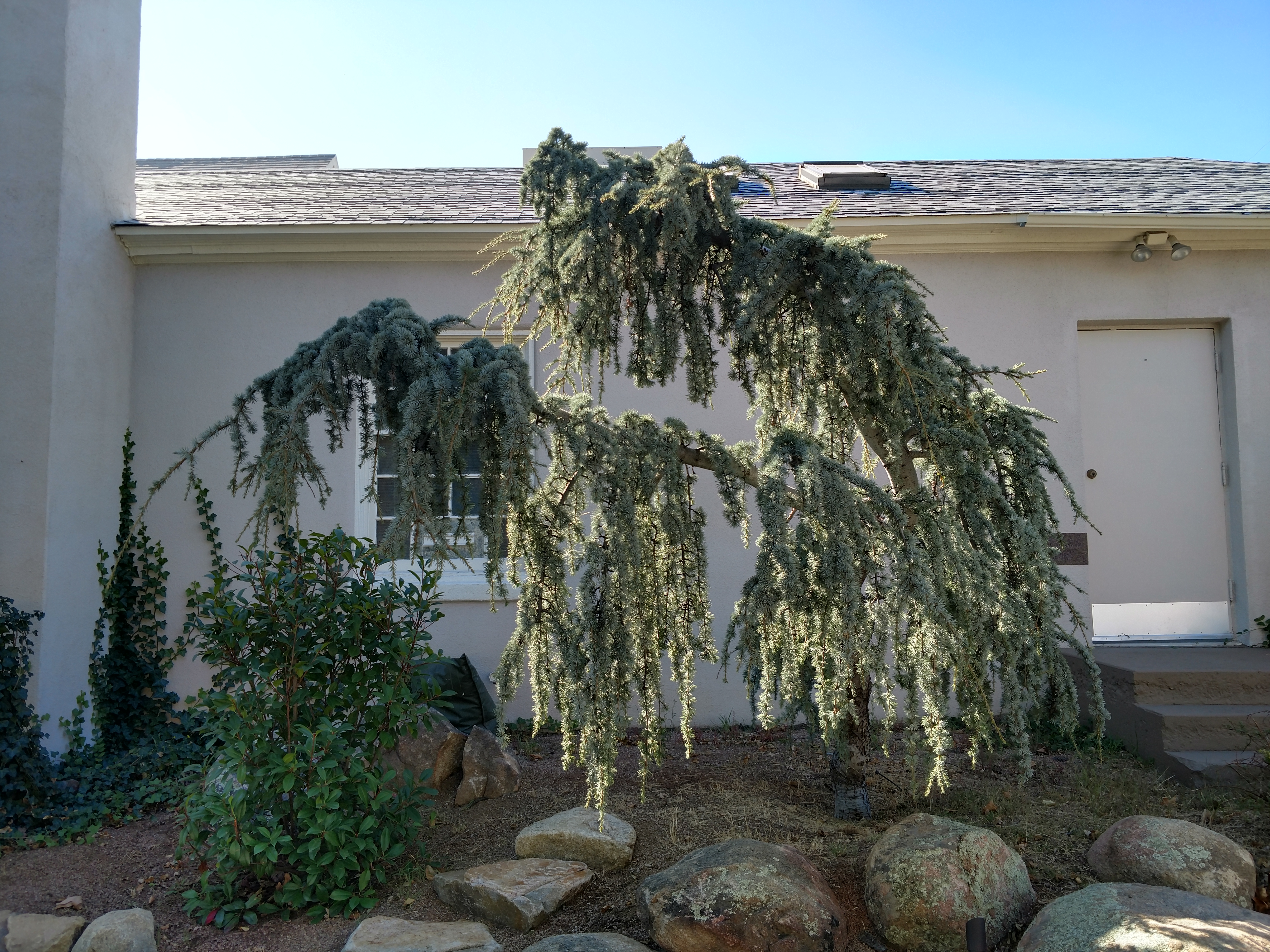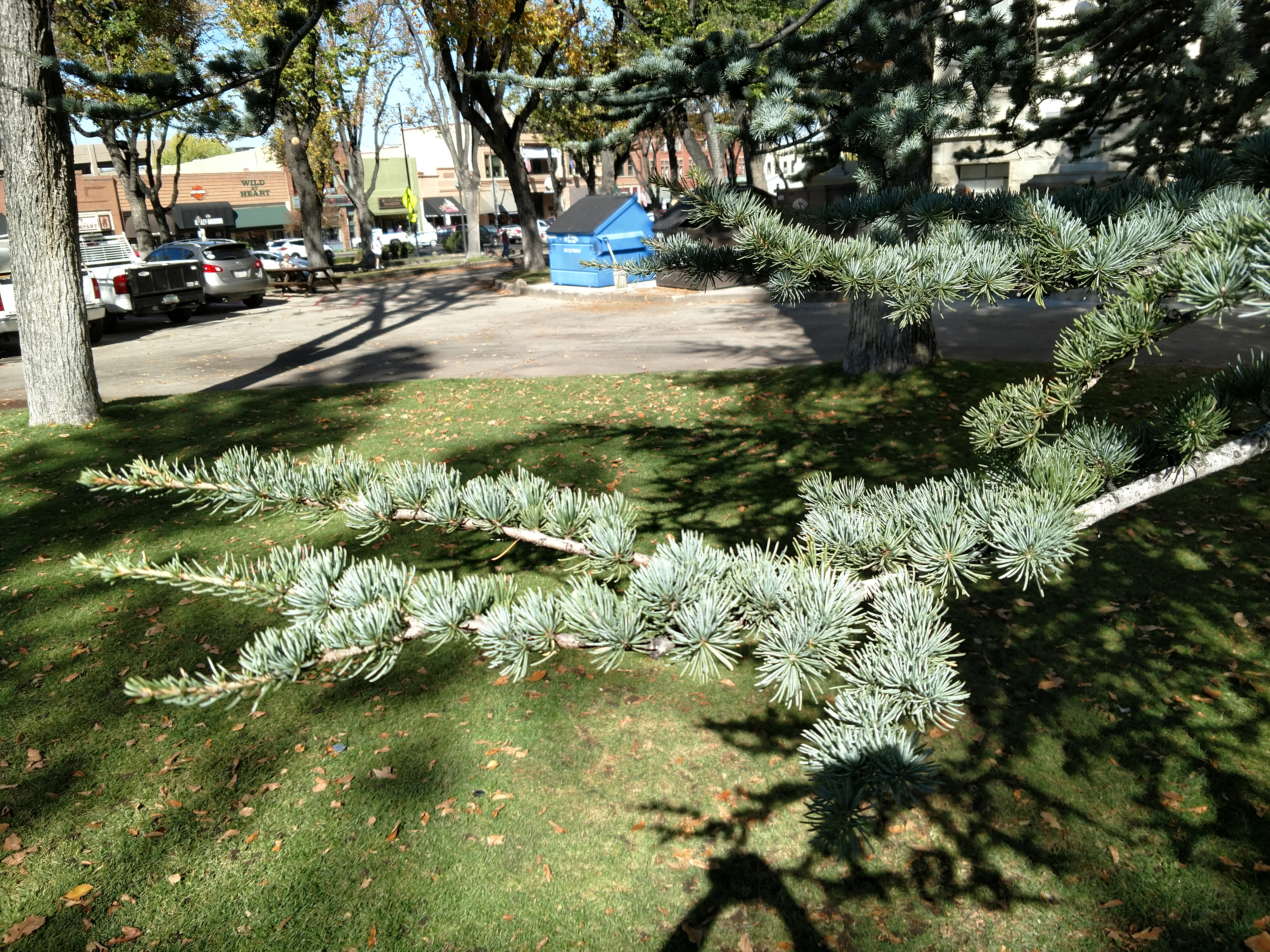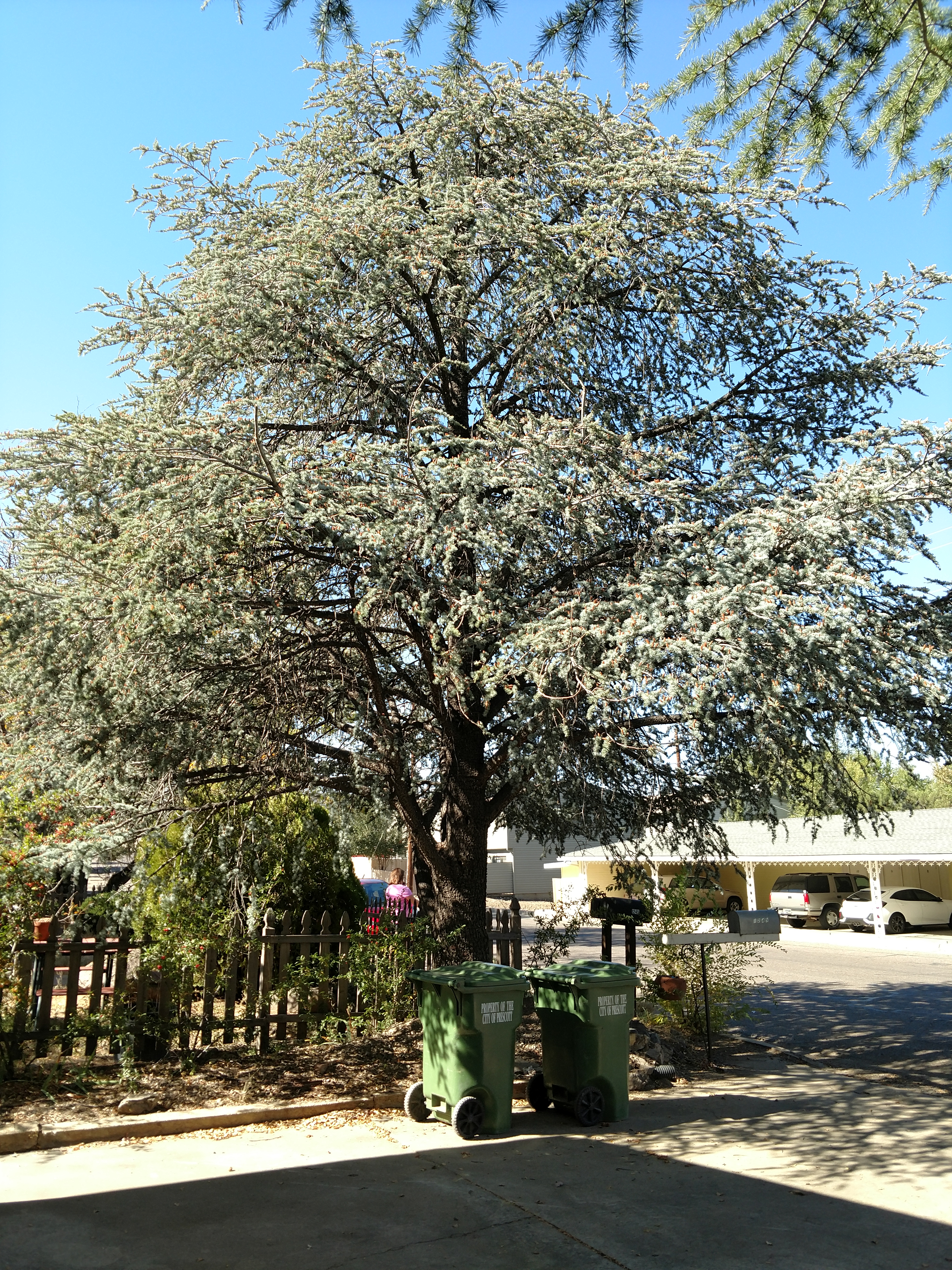 The Cedars of Lebanon and Beyond - November 1, 2017 Jeff Schalau, Agent, Agriculture & Natural Resources University of Arizona Cooperative Extension, Yavapai County The Cedars of Lebanon have been cited in religious writings and ancient mythology. This tree and its close relatives were also the basis of ancient and modern civilizations. As a consequence, the extent of the cedars in Lebanon, and other mountainous regions of Eurasia and north Africa has dramatically declined. Five species of true cedars (Cedrus) are native to the old world with one species occurring in north Africa, three species occurring in the mountains between the Mideast and the Himalayas, and another occurring on the island of Crete. Native stands of these trees exist, but many have been harvested for human uses over the last 7,000 or so years. The pressure for fuel and structural wood continues across much of the native range of Cedrus. Two species of true cedars are widely used in western landscapes: the Deodar cedar (Cedrus deodara) and Atlas cedar (Cedrus atlantica). The true Lebanese cedar (Cedrus libani) can sometimes be seen in parks and arboreta, but is less common in today’s nursery trade. All of these trees are well-suited to western landscapes because they tolerate heat and cold, grow well in alkaline soils, are moderately drought-tolerant, and have relatively few known pests living in the new world. The “straight species” of Cedrus tend to be too large for residential plantings. However, there are cultivars available that have smaller stature and other interesting growth characteristics. Many of these are suitable for residential situations. In the United States, we have our own “cedars.” The eastern red cedar with the aromatic wood that is used for textile storage chests is actually a juniper (Juniperus virginiana). Similarly, many Arizonan’s call our native junipers “cedars”. Junipers and true cedars (Cedrus) are actually quite different in appearance. Junipers have small scale-like leaves, berry-like fruits, and are relatively small in stature compared to true cedars which have needles arranged in rosettes, upright cones, and are generally large in stature. The Deodar cedar is probably the most widely planted true cedar in the west. It is easily recognized from a distance because it usually displays a weeping top leader. In its early years, it maintains the classic pyramidal shape, but after 30 to 40 years, it usually has a broader canopy and a flatter top. It has silvery, blue green needles that are about 1 to 2 inches long. It is generally cold hardy to about -10 degrees F, but can survive the heat of Tucson. All true cedars require good soil drainage. The mature height is about 70 feet and it often has a spread of 30-40 feet. There are several cultivars that have been selected for various features. A weeping variety (C. d. var. Pendula) is popular as a “focal point” plant and stays about 10 feet high. The Altas cedar is native to the Atlas Mountains of Morocco, Algeria, and Tunisia. While it seems to grow somewhat slower that the Deodar, it is still a relatively large tree (40-60 feet high and 30-40 feet wide) when mature. Like the Deodar, it also can become broader and less pyramidal with age. It also has shorter silvery, blue green needles that are about ¾ to 1½ inches long and is generally cold hardy to about -10 degrees F. Again, several cultivars are in production with slight variation in growth form and foliage color. The Lebanese cedar is less popular than either the Deodar or Atlas. I am not exactly sure why, but it may be due to similarity with the other species. Nevertheless, it is often found in arboretum collections. Interestingly, a wood wasp is threatening remnant stands of Lebanese cedar across its native range and scientists are working to protect remaining stands from this insect. While true cedars are graceful and attractive in youth for planting as a residential tree, resist the temptation to plant them in small residential lots. They do best with regular irrigation and should not be excessively fertilized after planting. It is also a coniferous evergreen and more flammable than many non-coniferous plants. Therefore, it is not a good choice for Firewise landscapes where flammability is a concern. I have included some photos and links below. Follow the Backyard Gardener on Twitter – use the link on the BYG website. If you have other gardening questions, call the Master Gardener help line in the Camp Verde office at 928-554-8992 or e-mail us at verdevalleymg@gmail.com and be sure to include your name, address and phone number. Find past Backyard Gardener columns or provide feedback at the Backyard Gardener web site: http://cals.arizona.edu/yavapai/anr/hort/byg/. Photos  Deodar cedar (Cedrus deodara) in Prescott, AZ. This tree has a wide crown from being open grown. Photo by Jeff Schalau.
Deodar cedar (Cedrus deodara) in Prescott, AZ. This tree has a wide crown from being open grown. Photo by Jeff Schalau. Pendulous deodar cedar (Cedrus deodara) in Prescott, AZ. Without staking, this tree would creep along the soil surface. These growth forms stay small and provide interest to the landscape. Photo by Jeff Schalau.
Pendulous deodar cedar (Cedrus deodara) in Prescott, AZ. Without staking, this tree would creep along the soil surface. These growth forms stay small and provide interest to the landscape. Photo by Jeff Schalau. Atlas cedar (Cedrus atlantica) in Prescott, AZ. This tree grew tall because it is competing for light with tall elm trees on the Courthouse Square. Photo by Jeff Schalau.
Atlas cedar (Cedrus atlantica) in Prescott, AZ. This tree grew tall because it is competing for light with tall elm trees on the Courthouse Square. Photo by Jeff Schalau. Atlas cedar foliage showing the rosettes of needles. This needle arrangement is characteristic of Cedrus. Photo by Jeff Schalau.
Atlas cedar foliage showing the rosettes of needles. This needle arrangement is characteristic of Cedrus. Photo by Jeff Schalau. The author does not know the exact species of this Cedrus. However, the growth form and branching pattern resemble the Lebanese cedar (Cedrus lebani). Photo by Jeff Schalau.
The author does not know the exact species of this Cedrus. However, the growth form and branching pattern resemble the Lebanese cedar (Cedrus lebani). Photo by Jeff Schalau.Additional Resources Cedars, Cedrus spp. Virginia Cooperative Extension pubs.ext.vt.edu/3010/3010-1467/3010-1467.html Missouri Botanical Garden Search under "Cedrus" to get true cedar photos and information. www.missouribotanicalgarden.org/ |